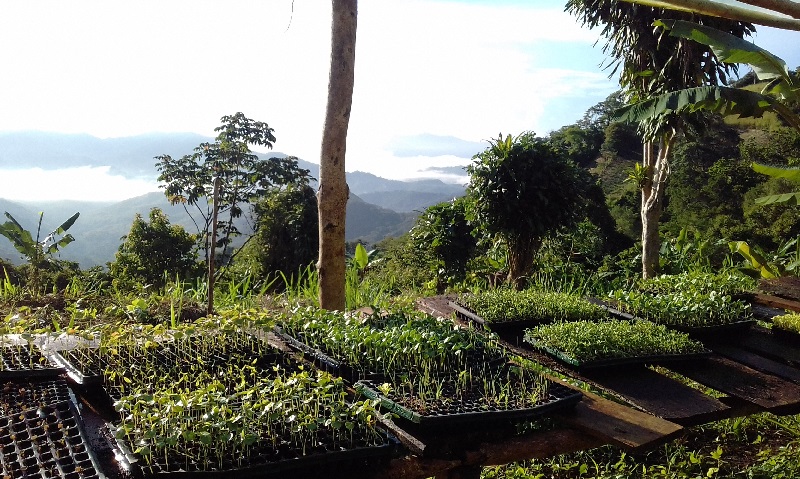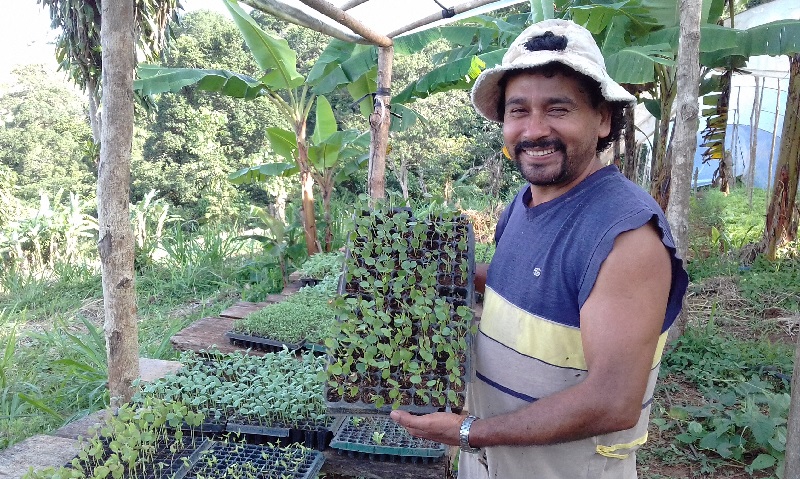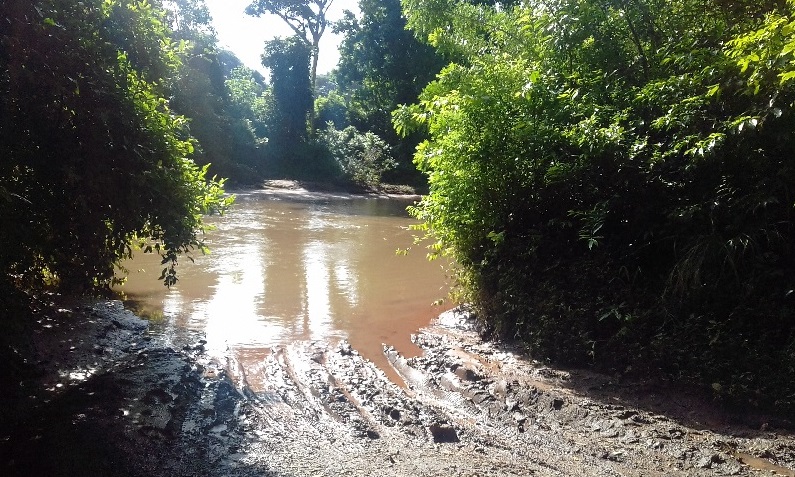For my internship with CIRAD, I have the pleasure and honour to work with a group of organic farmers “Organicos el Cerro Negro”. During one of my visits, one of the associated organic farmers, Mainor Barrantes explained how to make organic substrate. He grows his own seedlings to sustainable produce organic vegetables on a mountain ridge nearby Nicoya, Costa Rica.

Nicoya is in the Guanacaste Province of Costa Rica, characterized by severe droughts. To be able to produce all year round, these farmers harvest water in the rainy season. To learn more about the water management in Guanacaste, visit the Futuragua project site.
How to make Organic Substrate? [10 min]
The video is in Spanish, but you can click on [CC] for English subtitles if they are not showing automatically. Below follows the full transcript of the video. You can also watch it here directly on YouTube.



Transcript of the video: How to make Organic Substrate?
We take it from the mountain to do a nursery and compost. We take this huge sack from back there that he's carrying to there to do the compost. To do compost with mountain's microorganisms First we make a layer, like a hamburger made of mountain's microorganisms. And then we add nitrogen to the compost and csrbon. Nitrogen comes from green grass, or Guasimo leaves or Mucuna. The carbon can be made from rice husks also chicken manure and cow manure. So we take it and shake it to separate the fine soil. This is precious, the idea is to use it every year to cover... the soil with a new layer. I enjoy doing this because I learned it 19 00:01:27,920 --> 00:01:29,920 and it was a dream come truth. 20 00:01:31,000 --> 00:01:33,490 In October, God revealed it to me Then I went to learn it in some place near Zarcero it's a farm called I spent a week of training with my sister and cousin and thank God I learned it and put it into practice. It has been an excellent change for me because we're taking care of the new environment and nature and we're taking care of the oxygen everything that's part of the environmental protection. ...they used this. Now I'm finishing it so I get the finest soil then the thicker soil which has microorganisms is used on the compost. I'm in love of organic farming. The finest soil is falling down, as we finish it. Here I have a good portion for the nursery. This is for the new nursery I take out the thicker soil. you can use up to 33 ounces, this is a root starter it's called peat turf, it's a root starter. It's like a stimulant for plant growing, and plant blooming. It's like a sort of mud. You can smell it. I mix it up here in order to get more microorganisms. It's also soil healing It's also soil enriching. This is for helping them to expand. If the plant has a million soldiers... a million soldiers... it won't have any plague bothering them. This is like mixing flour for baking bread. I'm doing all this with love. Because I know that... what I produce here is healthy, and I'll bring those products to the consumer which are healthy, nutritious and high quality. ...healthy and organically, because we have to enrich soil. because older generations farmed naturally. They didn't use chemical products, and they didn't have to do it like I'm doing it now we're doing it this way now because, first of all, God allowed me to have this dream and make the change, because we used to work conventionally. And thank God I had that dream and I was able to make the change and fell in love of this beautiful organic farming. And the wonderful thing about this is... What was what I was about to tell you? What I was going to tell? You're recording right? Organic farming to me is... food safety. It's the only one. I know no other, this is the food safety. Then we're going to move... we're going to fill up this little tray with this wonderful mountain compost I prepared. My good friend is... learning a little bit about us. He's recording this video to show it to his friends. This is wonderful. We're doing this in order to fill the tray better. ...and Arugula. Arugula is a leaf which is largely consumed abroad. Thank God we've met... in my opinion, a really stable market. We earn our profits from there to feed our families. We sell fruit products like oranges Persian lime, mandarin orange, beans Ayote, Ayora Sazon, pipian, zucchini cucumber that we also produce here, lots of crops. ...five lettuce varieties, arugula, patchouli, dill, celery, parsley and another crops that we're going to try this year, like carrot, beet, potato strawberries, we could experiment on that. also onion. I thank God for giving us the strength and for having the endeavor and courage each day and keep learning about organic farming because you're always learning about this wonderful farming. I always put around five little seeds to make the nursery then I do this to before moving into the tray and then it blooms and you can take it to the field. Let's see the result
A small favor
 Did you like this video? Please share it on your social networks and help promote healthy food production methods. Share this kind of knowledge that has been forgotten due to the far going industrialization of agriculture. In the last two generations many productive land has been exhausted due to intensive use of chemical fertilizers. Organic matter is whats needed to provide soil structure and long term nutrient availability.
Did you like this video? Please share it on your social networks and help promote healthy food production methods. Share this kind of knowledge that has been forgotten due to the far going industrialization of agriculture. In the last two generations many productive land has been exhausted due to intensive use of chemical fertilizers. Organic matter is whats needed to provide soil structure and long term nutrient availability.
Apart from the Health- and Environmental aspects, there is one more argument I would like to put emphasis on regarding the promotion of organic food. It just tastes better because of the natural ripening of the fruits and vegetables. Once you know the difference, you will not want inflated food anymore.

Pingback: The One Thing Agriculture and SEO have in Common – Houdyk.com